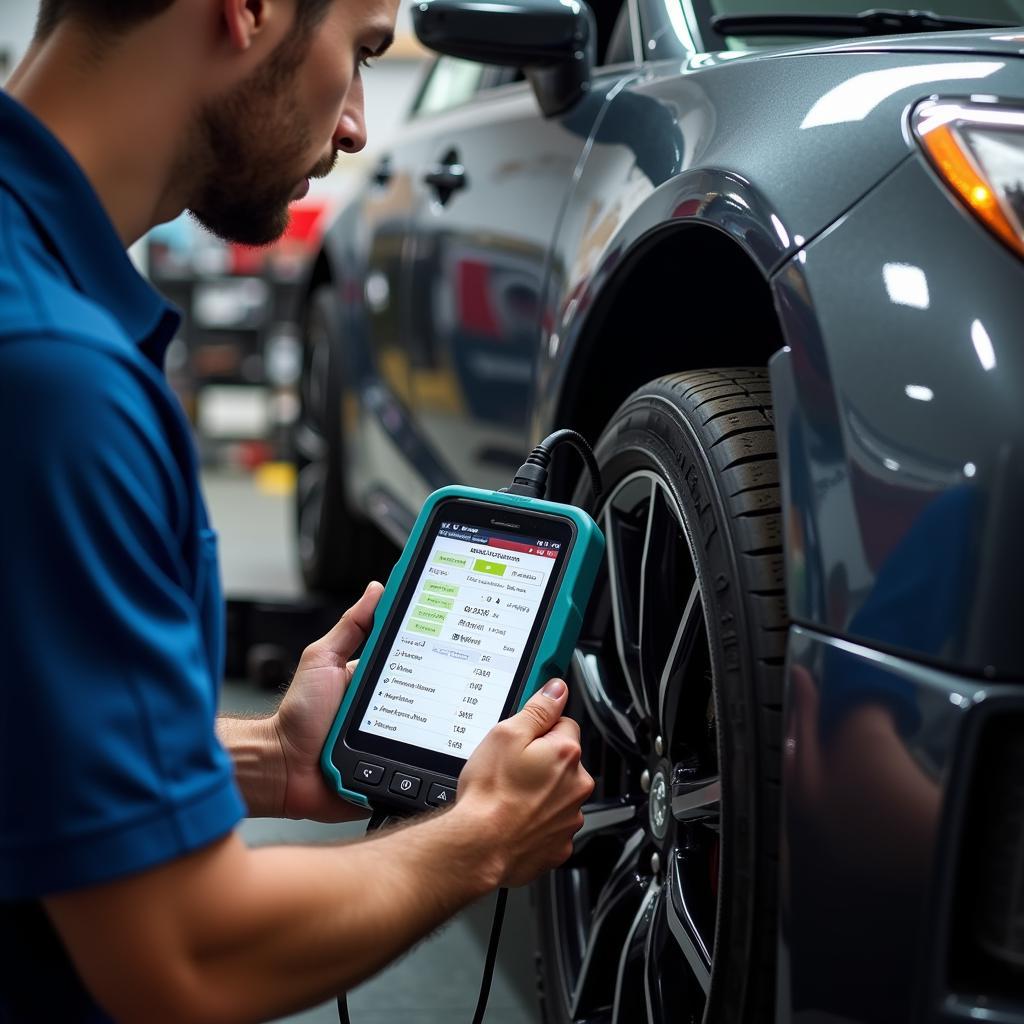The Mdi Diagnostic Tool has become an essential piece of equipment for anyone working on modern General Motors vehicles. Whether you’re a seasoned technician, a garage owner, or a car enthusiast, understanding how to effectively use the MDI is crucial for accurate diagnostics and repairs. This guide dives deep into the world of the MDI, providing valuable insights, practical tips, and answers to frequently asked questions.
Understanding the purpose and functionalities of the MDI diagnostic tool is the first step towards efficient vehicle diagnostics. The MDI, or Multiple Diagnostic Interface, is GM’s official diagnostic interface, designed to communicate with their vehicles’ onboard computer systems. It acts as a bridge between your computer and the vehicle, allowing you to access critical data, perform diagnostic tests, and even program modules. This powerful tool is essential for addressing increasingly complex vehicle electronics. Just as a doctor uses a stethoscope to understand a patient’s heart, a technician relies on the MDI diagnostic tool to diagnose a car’s issues.
Why is the MDI Diagnostic Tool Important?
The MDI diagnostic tool allows you to delve much deeper into a vehicle’s systems than generic OBD-II scanners. You gain access to manufacturer-specific codes, data streams, and bi-directional controls, which are essential for pinpoint diagnostics. Imagine trying to fix a complex electrical issue with only a basic voltmeter – the MDI gives you the advanced tools needed for today’s vehicles. Using the MDI diagnostic tool effectively can save you time and money by providing accurate diagnoses and avoiding unnecessary part replacements. It empowers you to make informed decisions about repairs, ultimately getting the vehicle back on the road faster. Similar to gm mdi diagnostic tool, other specialized tools provide targeted solutions for specific vehicle brands.
What Can You Do With an MDI Diagnostic Tool?
The MDI diagnostic tool’s capabilities extend far beyond simply reading and clearing codes. You can perform functions such as module programming, key fob programming, and even correcting mileage discrepancies. This comprehensive functionality makes it an invaluable tool for any serious automotive professional. The MDI allows you to perform a wide range of diagnostics, including reading and clearing diagnostic trouble codes (DTCs), viewing live data streams from various sensors and modules, performing actuator tests, and even programming new modules. Think of it as a Swiss Army knife for car diagnostics – it equips you for various diagnostic and programming tasks. Much like with gm mdi multiple diagnostic car interface tool correct mileage, mileage correction capabilities ensure accuracy and compliance.
How to Use the MDI Diagnostic Tool Effectively
Using the MDI effectively involves more than just plugging it in. Understanding the software interface, navigating menus, and interpreting the data displayed is essential for successful diagnostics. You need to know what you’re looking for and how to analyze the information presented.
- Establish Connection: Connect the MDI to the vehicle’s OBD-II port and to your computer.
- Launch Software: Open the appropriate diagnostic software, such as GDS2 or Tech2Win. Ensure the software is updated to the latest version.
- Vehicle Identification: Accurately identify the vehicle’s year, make, and model within the software.
- Select Function: Choose the desired function, whether it’s reading codes, viewing data, or programming.
- Interpret Results: Analyze the data displayed and use it to form a diagnostic strategy.
“Accurate vehicle identification is paramount when using the MDI,” says automotive diagnostics expert John Miller. “Incorrect identification can lead to inaccurate data and ultimately a misdiagnosis.” This reinforces the importance of meticulous data entry and understanding the vehicle’s specifications.
Common Issues and Troubleshooting with the MDI Diagnostic Tool
Like any complex piece of equipment, the MDI diagnostic tool can encounter occasional issues. Understanding common problems and their solutions will help you keep your diagnostic process smooth and efficient. Problems such as communication errors, software glitches, and driver conflicts can be addressed with proper troubleshooting steps.
- Communication Errors: Check connections, cables, and ensure the vehicle’s ignition is on.
- Software Issues: Update the software to the latest version and verify compatibility with your operating system.
- Driver Problems: Install or update the correct drivers for the MDI interface. This can often resolve communication issues.
“Regular software updates are crucial for optimal MDI performance,” advises Sarah Johnson, a certified automotive technician. “Updates often include bug fixes, performance improvements, and new vehicle support.” This highlights the ongoing need for software maintenance. Similar to car diagnostic and programming tools, maintaining updated software ensures compatibility and access to the latest features.
Future of MDI Diagnostic Tool
As vehicles become increasingly sophisticated, the MDI diagnostic tool, along with similar advanced car diagnostic tools download, will continue to evolve. Future updates and enhancements will likely include expanded vehicle coverage, new diagnostic capabilities, and improved software interfaces. Keeping up with these advancements is essential for staying at the forefront of automotive diagnostics.
“The MDI is not just a tool, it’s an investment in your future as an automotive professional,” emphasizes David Lee, an automotive instructor. “Staying informed about updates and new technologies will ensure you can continue to effectively diagnose and repair modern vehicles.”
Conclusion
The MDI diagnostic tool is an indispensable asset for anyone involved in diagnosing and repairing modern GM vehicles. Its comprehensive capabilities, combined with the right knowledge and skills, empower you to address complex automotive issues efficiently and effectively. Mastering the MDI is not just about using the tool, it’s about understanding the intricate systems of a vehicle and using the MDI as a gateway to that information.
For further assistance or to explore our range of diagnostic tools, connect with us at ScanToolUS. Call us at +1 (641) 206-8880 or visit our office at 1615 S Laramie Ave, Cicero, IL 60804, USA. We are committed to providing quality diagnostic tools and support to automotive professionals and enthusiasts alike. The older generation of diagnostic tools, like the gm vetronix techline tech 1 scan diagnostic tool, laid the foundation for today’s advanced systems like the MDI.

